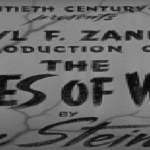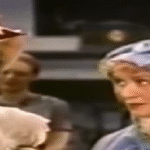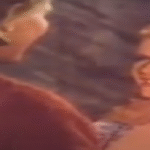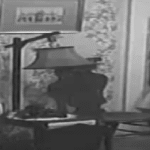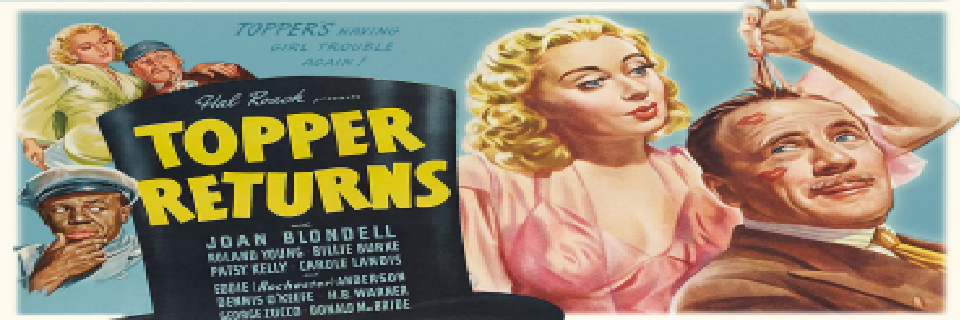Topper Returns (1941) is a supernatural comedy film that blends mystery, humour, and ghostly hijinks into a tale of mistaken identity and haunted happenings. Set against the backdrop of an old, spooky mansion, the story unfolds with a mix of charm and intrigue, weaving together classic elements of farce, screwball banter, and suspense. The film is the third and final entry in the Topper series, and although it revisits the ghostly premise of its predecessors, it stands on its own with a fresh plot and new characters.
The film opens with the lively and sharp-witted Gail Richards, who is travelling with her friend, Ann Carrington, to the latter’s family home, a large and foreboding estate. The journey is cut short when their car breaks down, and they accept a lift from Cosmo Topper, a somewhat flustered but kindly banker who is familiar with strange happenings, given his past experiences with ghosts. The trio makes their way to the Carrington mansion, where Gail is mistaken for Ann due to a mix-up involving luggage and room assignments.
That night, a shadowy figure sneaks into the house and murders Gail, who is in Ann’s bed. But death is not the end for Gail. Instead of passing on, she reappears as a ghost, spirited and still full of energy, determined to uncover the identity of her killer. She turns to Topper for help, believing he is the only one who can see and hear her. Initially reluctant and bewildered, Topper is soon swept up in Gail’s mission, as she cajoles and badgers him into investigating her death. Their dynamic is comedic and full of friction, with Gail’s boldness clashing amusingly with Topper’s nervous propriety.
As Topper reluctantly dives into the mystery, the film introduces a colourful cast of characters, each a potential suspect. There is the sinister butler, Latham, whose silence and ominous presence immediately arouse suspicion; Dr Jeris, whose intentions remain murky; and Ann’s eccentric father, the wheelchair-bound Mr Carrington. Then there’s the chauffeur, the housekeeper, and a bumbling local police inspector, all of whom add layers of confusion and comedy.
Topper’s investigation leads to a series of slapstick encounters and spooky encounters, with secret passages, creaking floorboards, and sudden appearances all contributing to the film’s eerie yet playful atmosphere. Gail’s ghostly antics often complicate matters, whether by floating through walls, knocking over objects, or possessing furniture, all while remaining invisible to everyone but Topper. Her efforts to communicate with others via Topper often result in embarrassment and disbelief, further heightening the absurdity.
Throughout the film, the relationship between Gail and Topper develops into one of unlikely camaraderie. She is impetuous and bold, while he is cautious and easily flustered, yet their bond strengthens as they inch closer to the truth. Gail’s ghostly persistence breathes life into Topper, who becomes more assertive and daring, rediscovering a sense of purpose and adventure.
The mystery surrounding Gail’s murder gradually unravels through a series of twists and red herrings. Hidden rooms, family secrets, and mistaken identities all play a role in deepening the intrigue. Eventually, it is revealed that the motive for the crime revolves around inheritance and greed, with the murderer intending to kill Ann to gain access to the family fortune. Gail’s accidental death, due to her being in the wrong bed, was a tragic misstep in the villain’s plan.
In the film’s climax, Gail and Topper expose the culprit in dramatic fashion. The killer is cornered amid chaos and ghostly interference, culminating in a comedic yet satisfying resolution. Gail, having seen justice served, is finally able to move on to the afterlife. She bids a fond, if mischievous, farewell to Topper, who is left once again bewildered by the strange turn of events, but clearly changed for the better.
Though the film hinges on supernatural elements, its real charm lies in its tone and character dynamics. Gail’s effervescence and Topper’s exasperation are at the heart of the comedy, while the mystery keeps the narrative engaging. The haunted house setting is both atmospheric and amusing, full of visual gags and old-fashioned thrills that echo classic drawing-room mysteries. The film pokes fun at genre conventions while embracing them, making it a light-hearted but cleverly crafted experience.
The performances elevate the material significantly. Joan Blondell is delightful as Gail, infusing the character with sass, intelligence, and a vivacious energy that drives the film forward. Roland Young reprises his role as Topper with impeccable comedic timing and weary charm, embodying a man constantly in over his head yet oddly suited to the chaos that surrounds him. Their on-screen chemistry adds warmth to the ghostly shenanigans and prevents the humour from ever becoming mean-spirited or too farcical.
While Topper Returns is very much a product of its time, with certain stylistic and narrative conventions typical of 1940s cinema, it holds up surprisingly well as a piece of entertainment. The blend of supernatural mystery and screwball comedy creates a unique tone that feels both familiar and inventive. The film never delves into horror, despite its ghostly themes, but rather uses the paranormal as a backdrop for a rollicking adventure laced with wit and absurdity.
In conclusion, Topper Returns delivers a spirited mix of mystery and humour, guided by a ghostly heroine and a hapless but well-meaning sidekick. It embraces the bizarre with enthusiasm and leaves the audience with the sense that even death can’t dampen a strong personality or a good joke. As Gail floats off into the great beyond, Topper is left with more than just another strange story – he’s rediscovered a spark in himself, and perhaps a new appreciation for the weird and wonderful.

